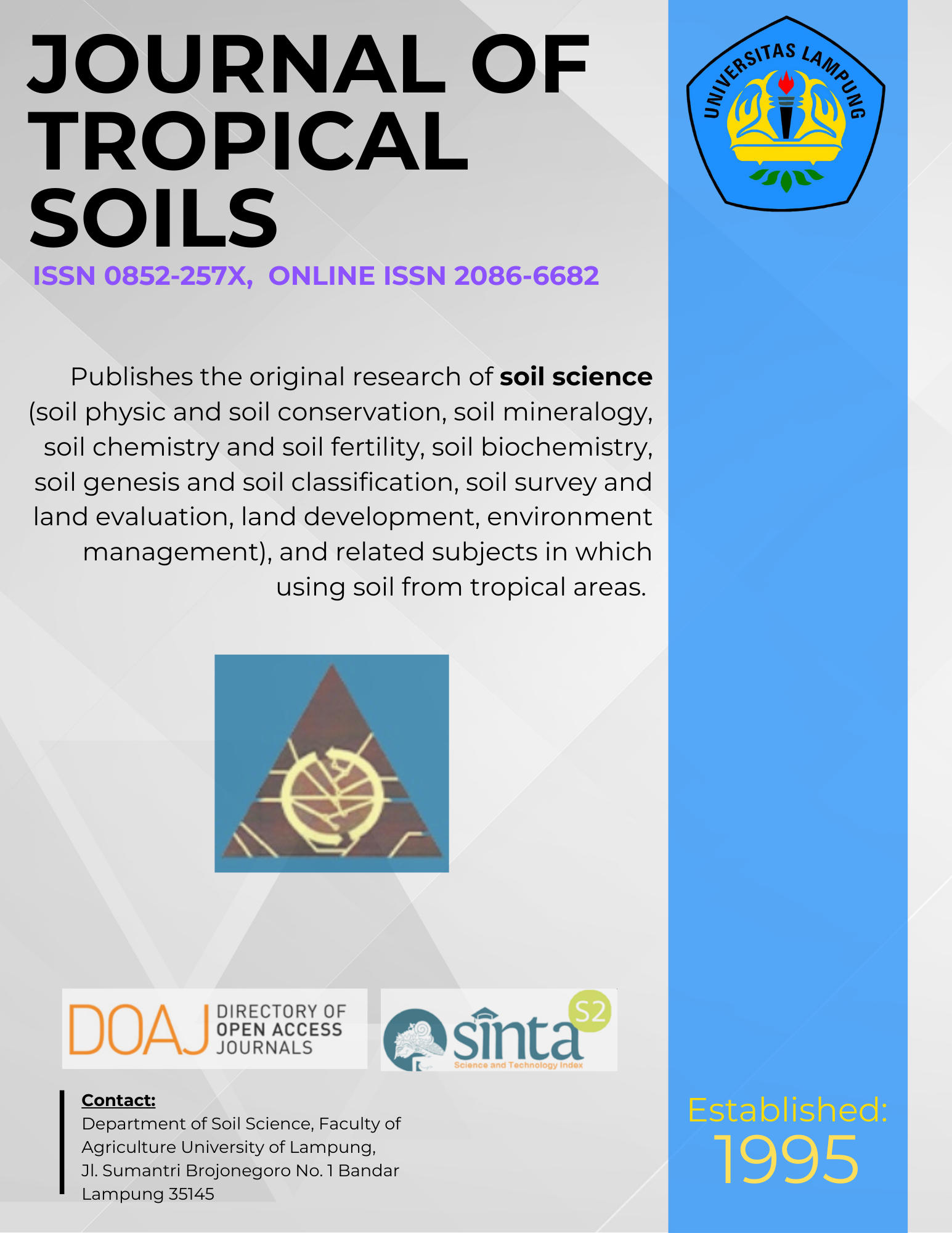Effects of land applications waste water of crude palm oil factory on some nutrient available in soil and nutrient content in palm oil
Main Article Content
Abstract
An experiment was aimed to study effect of waste water of crude palm oil (CPO) factory on some nutrient available in soil and nutrient content in palm oil.  The experiment was conducted using a completely randomized block design with six levels of waste water treatments (0, 250, 500, 750, 1.000, and 1.250 L tree-1 palm oil) in three replications. The result showed that the level 750 L tree-1 of waste water treatment have significant effects on increased of nutrient available in soil (N, P, K, Ca, and Mg) including soil pH, but not significant with level 1000 and 1250 L tree-1 except P. On the other hand, nutrient content in palm oil (N, P, and K) were not significantly influenced by waste water treatments.
Downloads
Download data is not yet available.
Article Details
Section
Articles
License for Authors
Authors who publish with this journal agree to the following terms:
- Authors retain copyright and grant the journal right of first publication with the work simultaneously licensed under a Creative Commons Attribution License that allows others to share the work with an acknowledgement of the work's authorship and initial publication in this journal.
- Authors are able to enter into separate, additional contractual arrangements for the non-exclusive distribution of the journal's published version of the work (e.g., post it to an institutional repository or publish it in a book), with an acknowledgement of its initial publication in this journal.
- Authors are permitted and encouraged to post their work online (e.g., in institutional repositories or on their website) prior to and during the submission process, as it can lead to productive exchanges, as well as earlier and greater citation of published work (See The Effect of Open Access).
License for Regular Users
Other regular users who want to cite, distribute, remix, tweak, and build upon author’s works, even for commercial purposes, should acknowledge the work’s authorship and initial publication in this journal, licensed under a Creative Commons Attribution License.
How to Cite
Effects of land applications waste water of crude palm oil factory on some nutrient available in soil and nutrient content in palm oil. (2008). JOURNAL OF TROPICAL SOILS, 13(1), 35-40. https://doi.org/10.5400/jts.2008.v13i1.35-40

